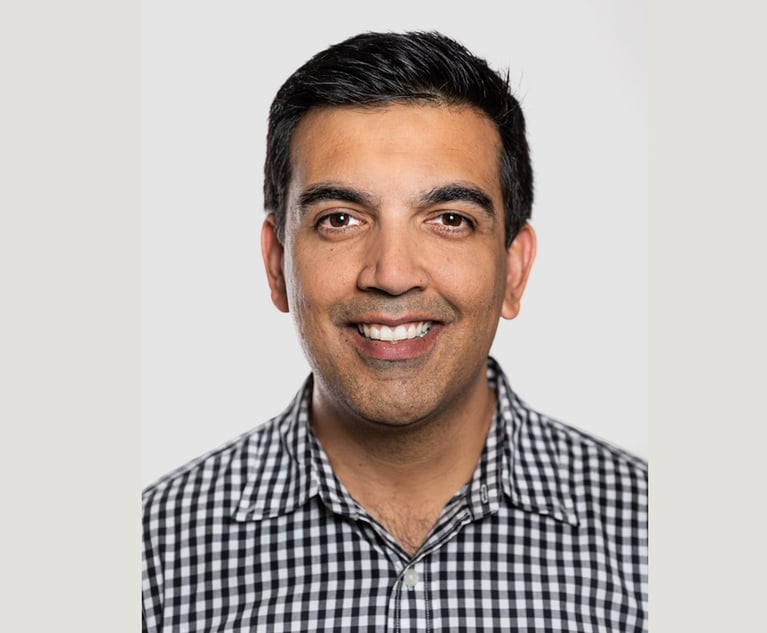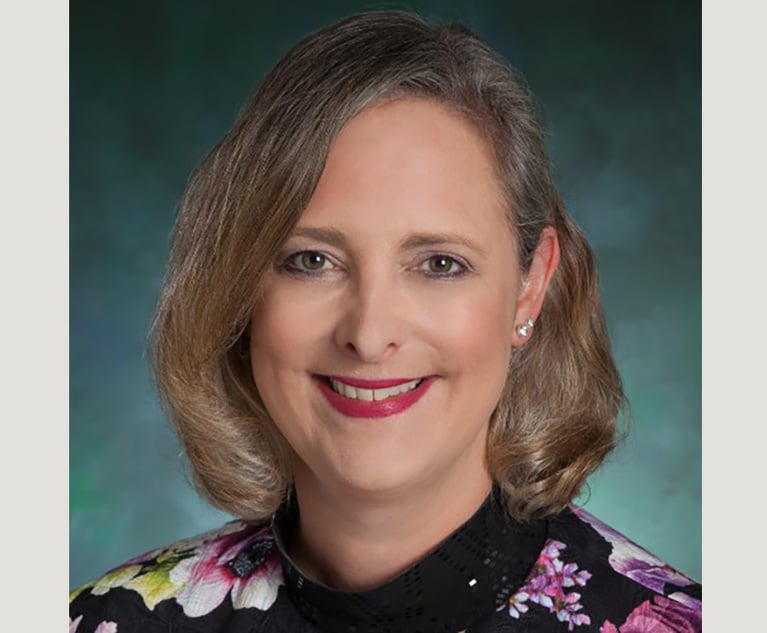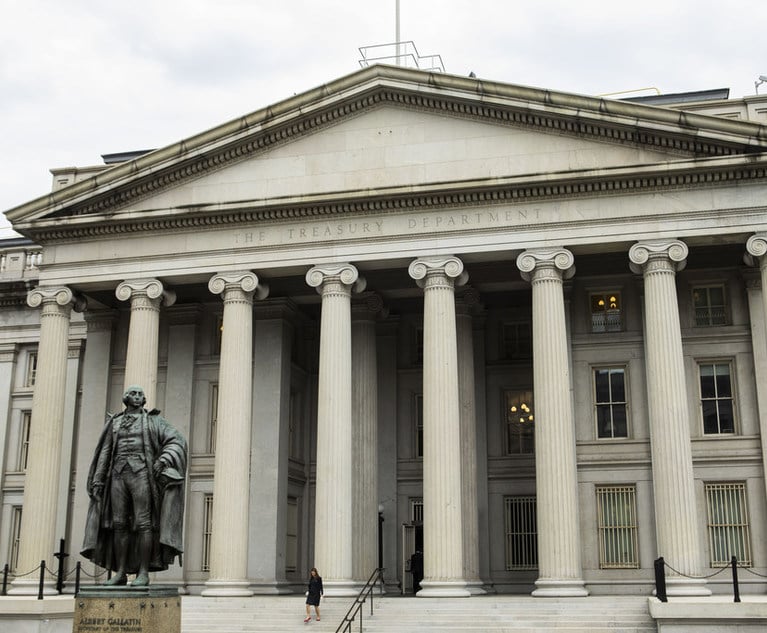Fast Service
Patent and Trademark Office's accelerated filing process gets off to a slow start.
May 31, 2007 at 08:00 PM
16 minute read
Patent number 7,188,939 looks ordinary enough. However, it may be the first of a new breed. Granted March 13, this patent on inkjet cartridge technology is the first patent the PTO has issued under its new accelerated examination process.
It usually takes a long time to get a patent in the U.S. The average wait is two to three years. And the wait can be far longer, depending on the type of technology involved. So on Aug. 25, 2006, the PTO gave inventors the option to request accelerated examinations.
This new type of examination costs applicants two to three times more than a traditional patent prosecution, and the prosecution process is more demanding. But there's a payoff. Such applications should receive a final decision from the PTO in less than a year.
The PTO handily beat that goal for its first accelerated-examination patent. It granted the patent to Japan-based Brother International in only six months. Given the average 25.4 months the PTO takes to review applications for ink cartridge inventions, the accelerated examination program slashed Brother's wait by 19 months. And thanks to the accelerated examination, Brother is already selling products in the U.S. with the patented technology.
The accelerated examination, however, is not suitable for every invention. The extra time and money this process demands means it is worthwhile only for carefully chosen inventions that need to receive legal protection as quickly as possible. And the accelerated examination remains controversial. Some experts claim the process produces weak patents, which courts are more likely to overturn than traditional patents.
“I'd never use it for a very high-value patent that might find its way into court,” says Russ Krajec, an inventor and patent attorney who has his own practice in Berthoud, Colo.
Laborious Undertaking
If a company wants an accelerated examination, it had better be willing to put in a lot of extra work. For starters, the applicant must do a thorough search of prior inventions in the field and identify every single claimed limitation on its own invention in prior art. It then must write a patentability report, which explains how each claim in its application is patentable over the prior art.
In the traditional examination process, by contrast, an applicant must disclose to the examiner any prior art it is aware of, but the applicant isn't legally required to search for prior art. The applicant need not comment on how prior art relates to the application–in fact, applicants try not to make such comments, for fear of saying something that may limit the scope of the claims.
The accelerated examination process also requires an applicant to work in close consultation with a patent examiner. The applicant must make its patent counsel available for several interviews with the examiner over a relatively short period of time. Those interviews help accelerate the review.
“That back and forth–by person or over the phone–sped up the process, compared with [the usual process of] writing things out and waiting for a written response,” says Henry Sacco, CLO for the U.S. subsidiary of Brother.
But that rapid interaction demands a lot from an applicant.
“It is definitely more work than you'd do in a regular prosecution,” says James Arpin, a patent attorney in the Washington, D.C., office of Baker Botts who helped Brother obtain its accelerated patent. “It is a full examination, just on a really tight time frame.”
Critics Take Aim
All this extra work produces not just a faster patent, but a stronger one, according to proponents of the new process.
“You begin the process with a better understanding of the prior art, so you submit more focused claims,” Arpin argues. “Because of your research, the PTO can come up to speed more quickly, and its responses to your application are more focused, so the results can be better.”
The PTO agrees.
“[T]he accelerated examination process produces a higher quality patent,” says John Doll, the PTO's commissioner for patents.”?? 1/2 Based on what examiners have said, the overall process is improved because of accelerated examination.”
Many patent experts, however, assert that this new program results in weaker patents, which can be attacked in new ways. Suppose, for instance, a patent granted under the program is later challenged in court, and the challenger unearths prior art that covers part of the claimed invention. This ordinarily would invalidate only part of the patent. However, a plaintiff challenging an accelerated patent can raise a new claim: that the patent owner knew or should have known of this prior art when doing its research for an accelerated examination and failed to provide this required information to the PTO. If the plaintiff proves the patent owner engaged in such inequitable conduct in the course of obtaining the patent, the entire patent becomes unenforceable.
The applicant's patentability report and repeated interviews with the patent examiner also create new opportunities to undermine the patent.
“To get the invention patented, you may make a statement that may be more particular than one would like,” says Neil Ferraro, a patent prosecutor in the Boston firm of Wolf, Greenfield & Sacks. “That could come back to hurt later [by limiting the scope of the patent]. The less you say in a patent application, the better.”
Accelerated Benefits
Even those who support accelerated examinations admit companies should use the process sparingly. Sacco, for instance, expects to use the program on less than 5 percent of Brother's 1,000 annual applications.
“It's not a program you'd use for every filing because of the time commitment and the cost,” Arpin says. “?? 1/2 An applicant might use it for a technology that is very important in its industry; when competitors using the technology have entered the market or may do so soon; when the applicant needs a patent to obtain financing; or to get an early idea of whether the PTO thinks the invention is patentable.”
The program is best suited for inventions that ordinarily take the PTO a long time to review. It offers little benefit for many types of mechanical inventions, where the average wait is just 12 to 13 months. And it would be of little interest to companies that want long lead times for their products.
“In areas such as electronics, Internet and biotech, companies ?? 1/2 don't want a patent published or issued until the latest possible date,” says William Galliani, a patent attorney in the Palo Alto office of Cooley Godward Kronish. “A three or four year pendency is just fine with them, especially if they are developing a product that won't have a market for five years or so.”
So far, businesses and their patent counsel have not rushed to embrace the accelerated examination process. During the program's first seven months, the PTO received approximately 220,000 patent applications, and only about 250 of these were for accelerated examinations.
But the PTO remains optimistic.
“The word is getting out that this is a good program for certain technologies and certain patents,” Doll says.
Patent number 7,188,939 looks ordinary enough. However, it may be the first of a new breed. Granted March 13, this patent on inkjet cartridge technology is the first patent the PTO has issued under its new accelerated examination process.
It usually takes a long time to get a patent in the U.S. The average wait is two to three years. And the wait can be far longer, depending on the type of technology involved. So on Aug. 25, 2006, the PTO gave inventors the option to request accelerated examinations.
This new type of examination costs applicants two to three times more than a traditional patent prosecution, and the prosecution process is more demanding. But there's a payoff. Such applications should receive a final decision from the PTO in less than a year.
The PTO handily beat that goal for its first accelerated-examination patent. It granted the patent to Japan-based Brother International in only six months. Given the average 25.4 months the PTO takes to review applications for ink cartridge inventions, the accelerated examination program slashed Brother's wait by 19 months. And thanks to the accelerated examination, Brother is already selling products in the U.S. with the patented technology.
The accelerated examination, however, is not suitable for every invention. The extra time and money this process demands means it is worthwhile only for carefully chosen inventions that need to receive legal protection as quickly as possible. And the accelerated examination remains controversial. Some experts claim the process produces weak patents, which courts are more likely to overturn than traditional patents.
“I'd never use it for a very high-value patent that might find its way into court,” says Russ Krajec, an inventor and patent attorney who has his own practice in Berthoud, Colo.
Laborious Undertaking
If a company wants an accelerated examination, it had better be willing to put in a lot of extra work. For starters, the applicant must do a thorough search of prior inventions in the field and identify every single claimed limitation on its own invention in prior art. It then must write a patentability report, which explains how each claim in its application is patentable over the prior art.
In the traditional examination process, by contrast, an applicant must disclose to the examiner any prior art it is aware of, but the applicant isn't legally required to search for prior art. The applicant need not comment on how prior art relates to the application–in fact, applicants try not to make such comments, for fear of saying something that may limit the scope of the claims.
The accelerated examination process also requires an applicant to work in close consultation with a patent examiner. The applicant must make its patent counsel available for several interviews with the examiner over a relatively short period of time. Those interviews help accelerate the review.
“That back and forth–by person or over the phone–sped up the process, compared with [the usual process of] writing things out and waiting for a written response,” says Henry Sacco, CLO for the U.S. subsidiary of Brother.
But that rapid interaction demands a lot from an applicant.
“It is definitely more work than you'd do in a regular prosecution,” says James Arpin, a patent attorney in the Washington, D.C., office of
Critics Take Aim
All this extra work produces not just a faster patent, but a stronger one, according to proponents of the new process.
“You begin the process with a better understanding of the prior art, so you submit more focused claims,” Arpin argues. “Because of your research, the PTO can come up to speed more quickly, and its responses to your application are more focused, so the results can be better.”
The PTO agrees.
“[T]he accelerated examination process produces a higher quality patent,” says John Doll, the PTO's commissioner for patents.”?? 1/2 Based on what examiners have said, the overall process is improved because of accelerated examination.”
Many patent experts, however, assert that this new program results in weaker patents, which can be attacked in new ways. Suppose, for instance, a patent granted under the program is later challenged in court, and the challenger unearths prior art that covers part of the claimed invention. This ordinarily would invalidate only part of the patent. However, a plaintiff challenging an accelerated patent can raise a new claim: that the patent owner knew or should have known of this prior art when doing its research for an accelerated examination and failed to provide this required information to the PTO. If the plaintiff proves the patent owner engaged in such inequitable conduct in the course of obtaining the patent, the entire patent becomes unenforceable.
The applicant's patentability report and repeated interviews with the patent examiner also create new opportunities to undermine the patent.
“To get the invention patented, you may make a statement that may be more particular than one would like,” says Neil Ferraro, a patent prosecutor in the Boston firm of
Accelerated Benefits
Even those who support accelerated examinations admit companies should use the process sparingly. Sacco, for instance, expects to use the program on less than 5 percent of Brother's 1,000 annual applications.
“It's not a program you'd use for every filing because of the time commitment and the cost,” Arpin says. “?? 1/2 An applicant might use it for a technology that is very important in its industry; when competitors using the technology have entered the market or may do so soon; when the applicant needs a patent to obtain financing; or to get an early idea of whether the PTO thinks the invention is patentable.”
The program is best suited for inventions that ordinarily take the PTO a long time to review. It offers little benefit for many types of mechanical inventions, where the average wait is just 12 to 13 months. And it would be of little interest to companies that want long lead times for their products.
“In areas such as electronics, Internet and biotech, companies ?? 1/2 don't want a patent published or issued until the latest possible date,” says William Galliani, a patent attorney in the Palo Alto office of
So far, businesses and their patent counsel have not rushed to embrace the accelerated examination process. During the program's first seven months, the PTO received approximately 220,000 patent applications, and only about 250 of these were for accelerated examinations.
But the PTO remains optimistic.
“The word is getting out that this is a good program for certain technologies and certain patents,” Doll says.
This content has been archived. It is available through our partners, LexisNexis® and Bloomberg Law.
To view this content, please continue to their sites.
Not a Lexis Subscriber?
Subscribe Now
Not a Bloomberg Law Subscriber?
Subscribe Now
NOT FOR REPRINT
© 2025 ALM Global, LLC, All Rights Reserved. Request academic re-use from www.copyright.com. All other uses, submit a request to [email protected]. For more information visit Asset & Logo Licensing.
You Might Like
View All

Netflix Music Guru Becomes First GC of Startup Helping Independent Artists Monetize Catalogs
2 minute read
Global Software Firm Trying to Jump-Start Growth Hands CLO Post to 3-Time Legal Chief

Supreme Court Reinstates Corporate Disclosure Law Pending Challenge
Trending Stories
- 1A Judge Is Raising Questions About Docket Rotation
- 2Eleven Attorneys General Say No to 'Unconstitutional' Hijacking of State, Local Law Enforcement
- 3Optimizing Legal Services: The Shift Toward Digital Document Centers
- 4Charlie Javice Fraud Trial Delayed as Judge Denies Motion to Sever
- 5Holland & Knight Hires Former Davis Wright Tremaine Managing Partner in Seattle
Who Got The Work
J. Brugh Lower of Gibbons has entered an appearance for industrial equipment supplier Devco Corporation in a pending trademark infringement lawsuit. The suit, accusing the defendant of selling knock-off Graco products, was filed Dec. 18 in New Jersey District Court by Rivkin Radler on behalf of Graco Inc. and Graco Minnesota. The case, assigned to U.S. District Judge Zahid N. Quraishi, is 3:24-cv-11294, Graco Inc. et al v. Devco Corporation.
Who Got The Work
Rebecca Maller-Stein and Kent A. Yalowitz of Arnold & Porter Kaye Scholer have entered their appearances for Hanaco Venture Capital and its executives, Lior Prosor and David Frankel, in a pending securities lawsuit. The action, filed on Dec. 24 in New York Southern District Court by Zell, Aron & Co. on behalf of Goldeneye Advisors, accuses the defendants of negligently and fraudulently managing the plaintiff's $1 million investment. The case, assigned to U.S. District Judge Vernon S. Broderick, is 1:24-cv-09918, Goldeneye Advisors, LLC v. Hanaco Venture Capital, Ltd. et al.
Who Got The Work
Attorneys from A&O Shearman has stepped in as defense counsel for Toronto-Dominion Bank and other defendants in a pending securities class action. The suit, filed Dec. 11 in New York Southern District Court by Bleichmar Fonti & Auld, accuses the defendants of concealing the bank's 'pervasive' deficiencies in regards to its compliance with the Bank Secrecy Act and the quality of its anti-money laundering controls. The case, assigned to U.S. District Judge Arun Subramanian, is 1:24-cv-09445, Gonzalez v. The Toronto-Dominion Bank et al.
Who Got The Work
Crown Castle International, a Pennsylvania company providing shared communications infrastructure, has turned to Luke D. Wolf of Gordon Rees Scully Mansukhani to fend off a pending breach-of-contract lawsuit. The court action, filed Nov. 25 in Michigan Eastern District Court by Hooper Hathaway PC on behalf of The Town Residences LLC, accuses Crown Castle of failing to transfer approximately $30,000 in utility payments from T-Mobile in breach of a roof-top lease and assignment agreement. The case, assigned to U.S. District Judge Susan K. Declercq, is 2:24-cv-13131, The Town Residences LLC v. T-Mobile US, Inc. et al.
Who Got The Work
Wilfred P. Coronato and Daniel M. Schwartz of McCarter & English have stepped in as defense counsel to Electrolux Home Products Inc. in a pending product liability lawsuit. The court action, filed Nov. 26 in New York Eastern District Court by Poulos Lopiccolo PC and Nagel Rice LLP on behalf of David Stern, alleges that the defendant's refrigerators’ drawers and shelving repeatedly break and fall apart within months after purchase. The case, assigned to U.S. District Judge Joan M. Azrack, is 2:24-cv-08204, Stern v. Electrolux Home Products, Inc.
Featured Firms
Law Offices of Gary Martin Hays & Associates, P.C.
(470) 294-1674
Law Offices of Mark E. Salomone
(857) 444-6468
Smith & Hassler
(713) 739-1250






